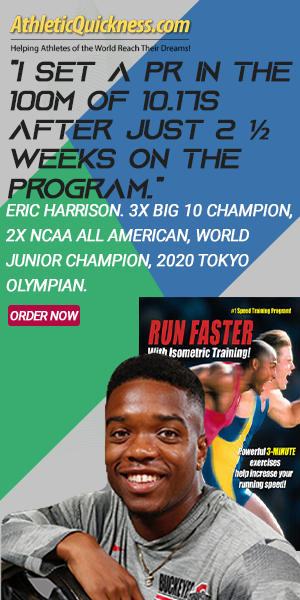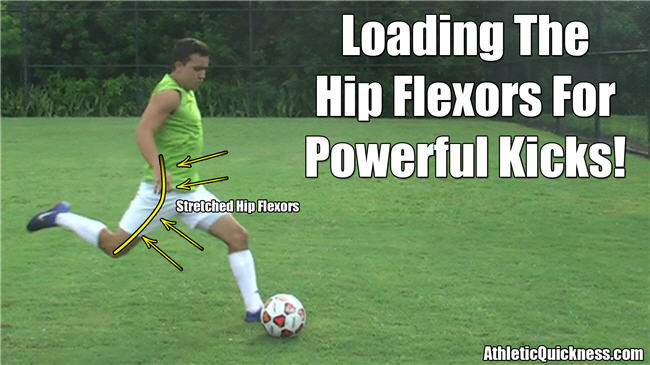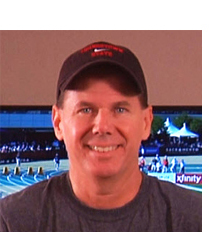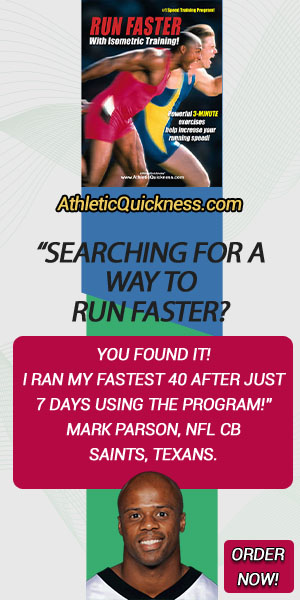Strong Hip Flexor Muscles
Increase Kicking Power and Kicking Distance
Even Top Players Can Immediately Kick Harder and Kick Farther
The hip flexors play a major role in kicking, whether it’s a soccer ball or with other kicking responsibilities such as kicking field goals, kickoffs and punting in football.
In Figure 1 below, an athlete is making his final preparation to kick a soccer ball. As soon as he plants his left foot on the ground, the right thigh and leg are pushed backward.
This stretches, or loads, the hip flexor muscles in the front and readies them for an aggressive pulling motion of the thigh, and subsequently the lower leg and foot, toward the ball.
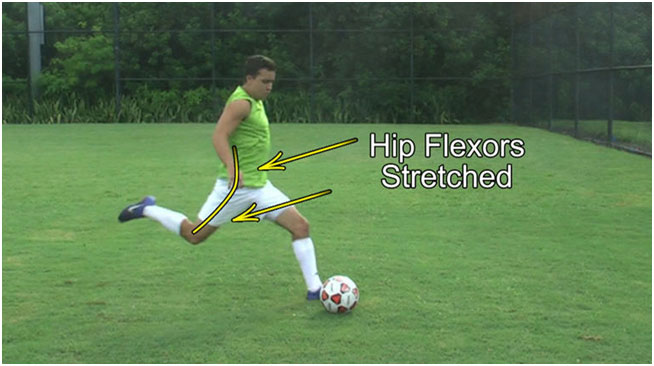
Figure 1. Athlete Prepares to Kick Ball
The hip flexors muscles are the psoas, iliacus, vastus rectus (A.K.A. rectus femoris), sartorius, adductor brevis, adductor longus and pectineus. These are shown in Figure 2 below.

Figure 2. Hip Flexor Muscles
As the athlete continues the kicking motion, the powerfully strong hip flexors muscles in the front begin to contract and pull the right thigh forward. This can be seen in Figure 3.
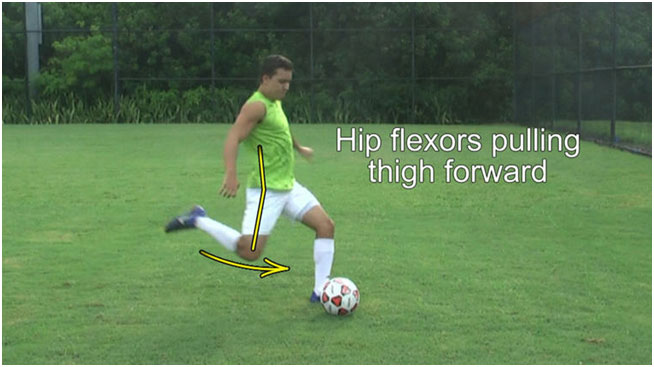
Figure 3. Hip Flexors Pulling Thigh Forward
You will also notice in Figure 3 above that the right lower leg, or calf, is being flexed behind the thigh at this point. This is a function of your hamstring muscles. What is really interesting about this particular motion is that it does two things:
1) With the leg flexed behind the thigh, it lessens the load the entire right leg places on the hip joint, thus making it easier to swing the leg faster. If the entire leg was straight at this stage in the kicking motion, it would lengthen the “lever arm” (entire length of the leg) acting at the hip joint, thus making it feel and act heavier. If that were the case, it would therefore require more force to swing, or kick, and the result would be less distance and power.
So, with the knee, or leg, flexed in this position prior to kicking the ball, the force acting at the hip joint is lessened. This will make kicking with the thigh and leg easier. As you might have guessed, this is designed for efficiency. This knee flexion also occurs while running and for the same reason … efficiency.
2) With the leg flexed behind the thigh, the knee extensors in front, or quadriceps muscles, are now being stretched. This stretching is necessary to load your thigh muscle, so you can create a powerful contraction with the lower leg when needed.
As the kicking motion continues, the hip flexors continue to pull the thigh forward and now upward as seen in Figure 4 below.

Figure 4. Hip Flexors on Follow-Through
Also notice two actions in Figure 4:
1) The lower leg, or calf, is now extending. This again is a function of the quadriceps muscle. Because this muscle was stretched just milliseconds prior to this, a powerful myotatic stretch reflex is activated making the motion all the more powerful.
2) Also notice the position of the player’s arms and hands. Because the kicking motion produces a torque across the midsection of his body, which is a counter-clockwise torque for the right-footed kicker, the player’s upper body must counter this torque.
He does this by thrusting his right arm behind him and toward his left while at the same time pulling his left arm across his body in the front, to his right. These two arm movements create the necessary counter-torque in his upper body, in the clockwise direction, so the player can maximize the power of his leg at contact.
If he didn’t create the counter-torque with his upper body, he would end-up spinning in a circle in the same direction as his kicking leg, and very little power would be generated.
This is done for similar reasons as the tail rotor on a helicopter. Without it, the helicopter would simply spin in a circle and be rendered essentially ineffective.
As the kicking motion nears completion, we can now see the hip, or thigh, near complete flexion in Figure 5.

Figure 5. Hip Flexors fully flexed.
Also, notice the position of both of his arms and hands. They are positioned even further across his body, and this again is to produce the necessary counter-torque to match what his lower body has generated.
It is conceivable for some athletes that aside from strengthening the lower leg to help them kick farther and harder, without adequate counter strength and quickness in the upper body, a powerful kicking could be neutralized.
The AthleticQuickness.com soccer program not only has exercises for you to develop a strong kicking leg, but it also contains exercises to develop a strong counter-torque in the upper body. Combining speed and quickness exercises in both directions and regions in the body will ensure your greatest success when you kick.
When someone asks you whether or not the hip flexors are needed to kick a soccer ball, you will be able to confidently answer them with a, “Yes, they play a major role in kicking!” You will also be able to tell them the importance of developing a strong counter torque with the upper body, which is sure to get their attention!

